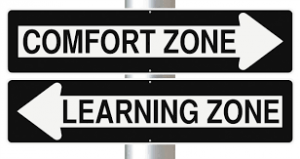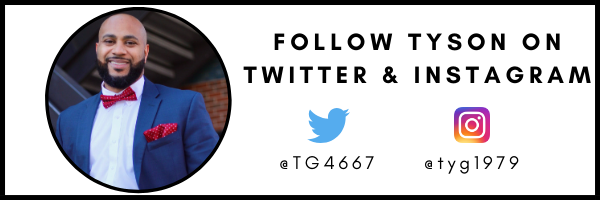TL;DR:
- Settling in to our comfort zone leads to stagnation.
- When we get outside our comfort zone, we grow and become better.
Origination of “The Comfort Zone”
I have always had trouble taking risks or thinking outside the box, for as long as I can remember.
I often think back to my college years when it was time to choose a major. I was convinced that I wanted to be a business major. I went on my college visit and discovered that business majors had to take a ton of math.
Math? My worst subject! The fear of failure and the fear that I’ll have to work harder than ever before terrified me. Why should I bother with the challenge when I can choose something I’m comfortable with?
I chose physical education because it made me comfortable. I wanted to avoid doing things that are unfamiliar and stick with things I know. I avoided a major with math because I wasn’t comfortable with it—but I always passed! Which means I had the capacity to learn the material.
When you show your class that you're willing to get uncomfortable, you give them permission to do the same. And that's where the best learning adventures start. Share on XAutopilot
There are perks of living in your comfort zone. You feel safe, secure, and confident, but best of all–you’re in control.
Fast forward to my career as a teacher. As a young teacher, you are like an infant. Early in my career, everything that I did, saw, and heard, was new. As a new teacher, you’re learning every minute of every day. You’re falling and failing but then you get right back up and try again. You’re growing physically, mentally and emotionally.
As I got older, something happened. I started to get comfortable. I stopped doing things that were unfamiliar and stuck with things I knew. I stopped learning new things and settled into the same routine. I was on autopilot.

Unfortunately, this side of comfort brings feelings of frustration, stagnation, and the possibility of being “stuck” is caving in on you. I’ve been a teacher for 13+ years, teaching the same subject, lesson plans, and assessments. A complacent attitude and a lack of desire led me to be better.
Take A Risk
A new opportunity to teach health became available. I still felt very uncomfortable about my transition to the classroom. I was not reaching the students to help them master the subject matter. Although teaching health was challenging, it has caused me to be more creative and resourceful.
My time was spent learning a new curriculum, developing personalized learning techniques, and modifying lessons. Was this extra work? Yes. Was I doing more work than my students? Some days. Were they suddenly miraculous students? No. But did they know someone cared? Absolutely.
This was a time to push the boundaries of what I felt was comfortable, and challenge myself to try new things, be adventurous, explore, experiment, and take a bit of a risk. Taking this opportunity has helped me learn, grow, and, ultimately, achieve the growth I yearned for.
The constant reminder of mastering a new skill is frustrating when stepping out of your comfort zone. I’ve always wanted to integrate tech into my classroom. I was not a tech person, so I learned about ed-tech tools. I have to explore technology tools for hours before I can demonstrate for my students. I’m trying to practice what I preach for students and approach this with a growth mindset!
Acting on my fears allows me to build my confidence in my ability to accomplish my goals. This action has created momentum and set off a chain of events that have led to all sorts of things that I didn’t see coming. With each step outside my comfort zone, I realized I could not only survive, but thrive.
[scroll down to keep reading]
Comfort Zone Reflection

So, what have I learned from going outside my comfort zone?
Learning outside of my comfort zone is equally challenging and beneficial for students.
My biggest takeaway from getting out of your comfort zone is this: Get out of your comfort zone to help students succeed, even if it means that you’ll put them out of their comfort zone in the process. Growth can’t happen any other way!
Life is about embracing new challenges. Learning outside the comfort zone is anything but comfortable. But great things come from it.
Watch how your classroom environment changes. When you show your class that you’re willing to get uncomfortable, you give them permission to do the same. And that’s where the best learning adventures start.
About Tyson Gardin
Tyson Gardin is a health/physical education teacher in the Fort Mill School District where he has the honor and joy of working with every student in the building.
Tyson is certified in school administration, a member of the South Carolina Health Advocates, and holds an Education Specialists Degree in Educational Leadership. He is dedicated to motivating and engaging every student.
Tyson lives in Fort Mill, SC with his wife and two children.


